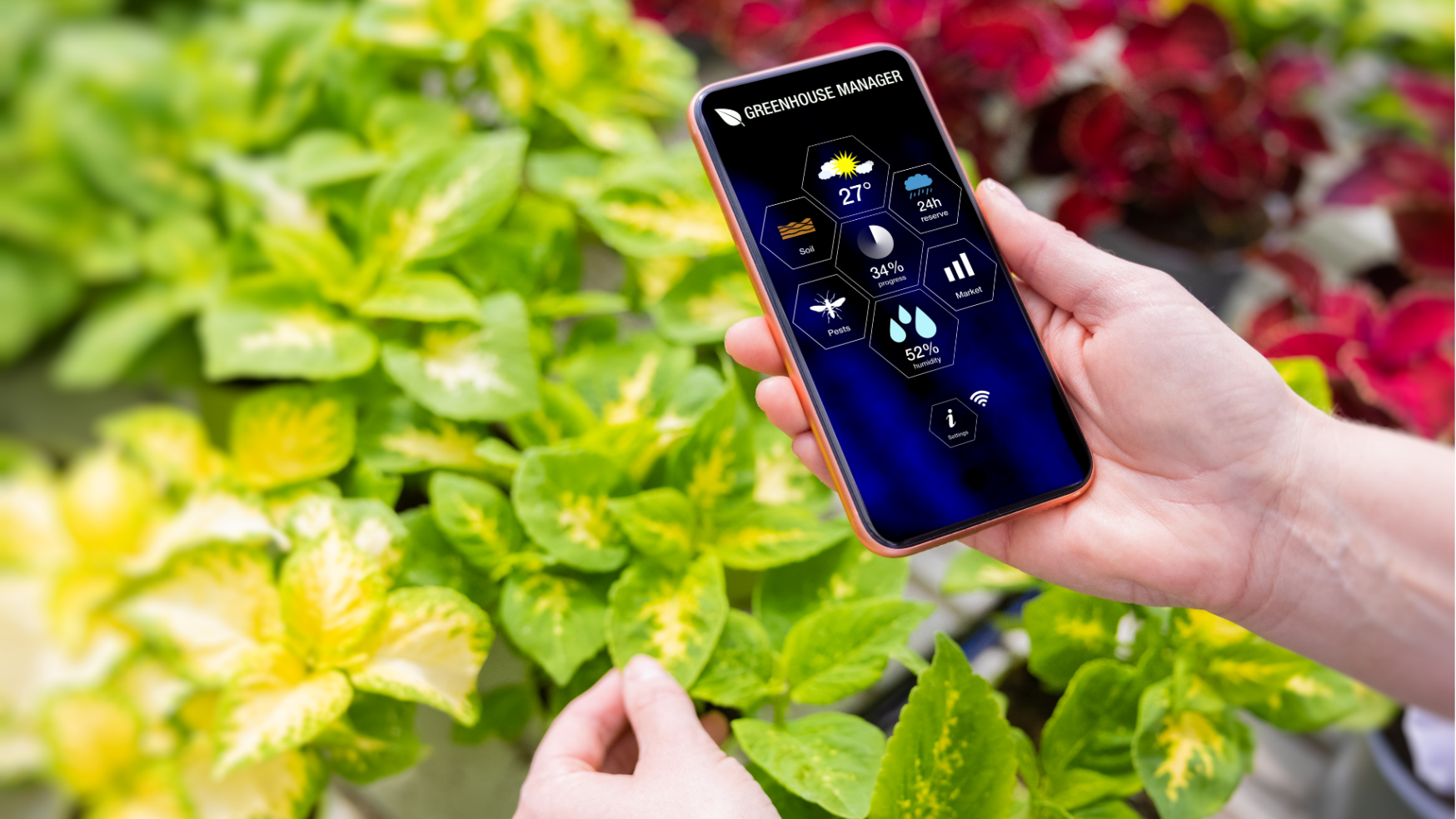Not all flies are bad! We are used to being concerned when we see a blowfly, thinking it carries disease, or being annoyed by those pesky common bush flies. But actually, they’re all just doing their jobs. However, there are quite a few flies that are little more appealing than the common bush or blowfly and which are welcome visitors to sustainable gardens.
These are flies that are beneficial to us because they are predators of insects we often aren’t keen on, or they are important pollinators.
Flies belong to the Order of insects known as Diptera. This order is characterised by some distinctive features, including the fact that members of the order look fairly similar.
- All flies have complete metamorphosis, that is, there is egg, larva (maggot), pupa and adult.
- The larvae have no true legs and are mostly referred to as maggots.
- Those huge compound eyes are common.
- And although some species are wingless, most have wings.
- The order also includes mosquitoes, gnats, midges and leafminers.
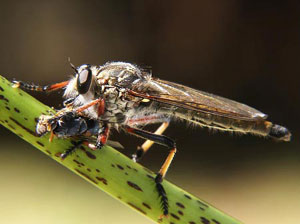
Robber Flies
(Family Asilidae)
Keep a look out for robber flies, for example. They aren’t pretty but they are great predators. They are very successful predators with huge appetites, and they’ll eat whatever insects happen to wander through.
Robber flies hunt by perching somewhere where they can see suitable prey and usually in a sunny open area. They catch prey in mid air, gripping with strong legs and modified mouth parts. Robber fly mouth parts have evolved to include a form of stabbing proboscis. The proboscis injects saliva containing toxic enzymes into the prey. Neurotoxins paralyse the prey and then proteolytic enzymes digest the protein in the body tissue. The fly then returns to its perch with the prey (as shown in the photograph above) and consumes the liquidised body tissue.
Robber flies can immobilise and eat bees, wasps, dragonflies, grasshoppers and even spiders.
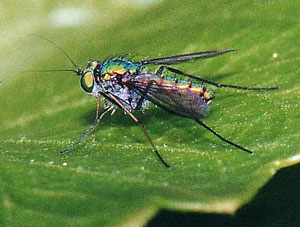
Long legged fly
(Family Dolichopodidae)
This fly looks less like a fly because of its long dainty legs and thin body. It’s metallic and quite bright with transparent wings that have interesting markings on them.
The adult Dolichopodid fly (as it is referred to scientifically) only grows to about 6mm in length. It preys on smaller soft bodied insects such as aphids, thrips and spider mites.
The larvae live in moist soil and under tree bark and are either scavengers or predators of other insect larvae.
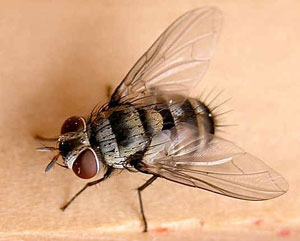
Tachinid Fly
(Family Tachinidae)
There are 542 named Australian species of Tachinid flies, making the Family Tachinidae one of the largest families of the order. They all parasitise other insects, usually the larvae of moths and butterflies, but also the larvae or adult of beetles, and the adults of bugs and grasshoppers.
One species parasitises caterpillars just before they pupate. The result is that several flies emerge from the chrysalis instead of a butterfly.
The larvae of this fly are well adapted to their life inside their food!
Tachinid flies are extremely diverse in appearance. They can be quite drab or brightly coloured. And some even mimic wasps.
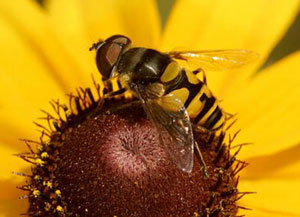
Hover Fly
(Family Syrphidae)
These unusual little flies have a characteristic flight pattern. They hover in one spot, then suddenly move forwards or sideways, then hover again. They can often be seen in large numbers.
Their black and yellow stripes mean they can be mistaken for bees or wasps, and that’s their thing. They have actually evolved as wasp and bee mimics.
They all have large heads, large eyes and about 10 to 15mm in length. These wasp mimics tend to have a narrower waist.
The adults feed on nectar and pollen, and their larvae eat aphids, scale insects, thrips and can parasitise caterpillers. They are important pollinators of plants.
Some species lay their eggs in stagnant water, where the maggots become a predator of mosquito larvae. Another’s larvae live by scavenging in ant nests. They mimic the ant’s chemicals and move around undetected. A true cloak of invisibility!
Attracting Beneficial Flies
To attract these flies plant a wide variety of herbs and flowering plants which have a mass of tiny flowers aggregated on a stalk. Many are members of the family Umbelliferae (Apiaceae) like carrot, parsley, coriander, but there are many others such as alyssum, mints and related herbs like dogbane, lavender, tansy, yarrow, feverfew and lemon balm. Since mouth parts of these flies are small, the small flowers enable easy access to nectar. And at the same time, we can enjoy attractive masses of colour in the garden.
References
Kerruish, R.M. & P.W. Unger, 2003, 3rd edition, Plant Protection 1, published by RootRot Press, ACT
University of Sydney, School of Biological Sciences.
Photograph of Robber Fly courtesy of Keith Power, Toowoomba, Qld.
Photograph of Hover Fly courtesy of Troy Bartlett.
Related Articles:
Pest Alert: Polyphagous Shot-Hole Borer (PSHB)
The Polyphagous shot-hole borer (known as PSHB; Euwallacea fornicates) is a pest first detected in Australia 2021 in metropolitan Perth. Native to…
Citizen Science: A Pathway to Gardening Success and Biodiversity Conservation
In recent years, the realm of science has experienced a remarkable transformation, one that invites people from all walks of life to participate…


